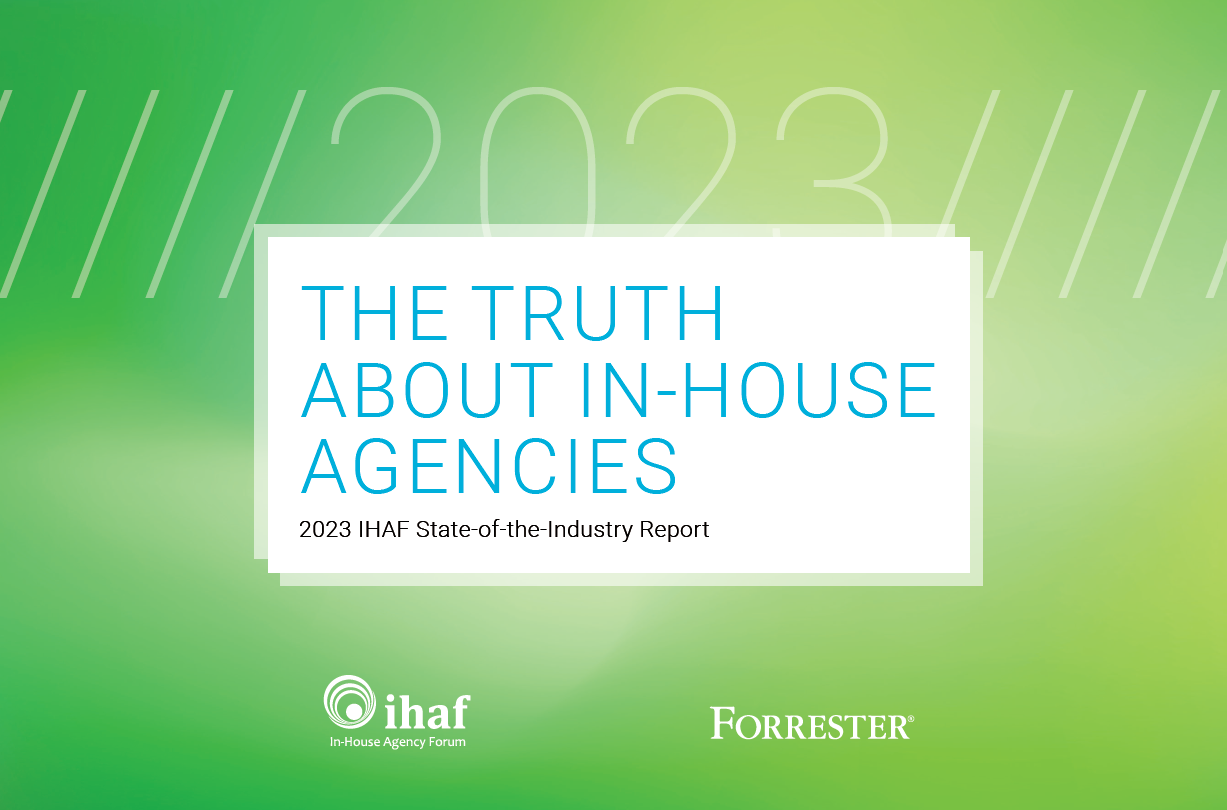Why Do We Call It Content Marketing?

Many companies today are experiencing a seismic disruption in the way they create products and get people to buy them. And for those of us in the in-house agency world, that seismic disruption is creating a ripple effect right down through our shops.
Disruption also creates opportunity, however. In fact, next week I will have the pleasure of speaking with my good friend and IHAF colleague, Phyllis Woods of Marriott, as part of the IHAF Masters Series at HOW Design Live. Phyllis and I have been doing a lot of thinking lately on what content marketing really means and how to turn the tide within our own in-house teams at Marriott and Discovery.
First, let’s ground ourselves with a few definitions. The definition of traditional marketing as we know it is “the act of promoting or selling products or services.” Content marketing is typically defined as a "type of marketing that involves the creation and sharing of content that does not explicitly promote a brand but rather stimulates interest in its product or service.”
So, my first question is, why do we call it content marketing? If marketing by definition means “selling and promoting,” shouldn’t content marketing—the act of not explicitly promoting—be called something else? Maybe content communication? Or content conversations?
Either way, our millennial friends and colleagues are the ones who have really helped shape this notion of not wanting to be “sold” to. They reject pushed messages and turn a blind eye to traditional ads. They want a relationship with your brand. They want good, authentic, creative stuff without being told to buy your product. Oh yeah, and they want it on demand.
For most of us leading in-house agencies, we built our teams to produce traditional 360-ad campaigns in print, digital and TV. Who knew five short years ago that we’d be faced with a dizzying array of digital platforms for talking to our consumers.
As an in-house contributor, and consumer yourself, you may even know instinctively what you need to do to produce great content. First, think about how to democratize your voice. It’s no longer a one-way exchange but rather a two-way or multi-way conversation. You’re no longer the only voice of authority; you need to stimulate participation.
Second, you need to give your customers something of value on a frequent regular basis. That could come in a lot of formats: entertaining videos, social media influencers offering tips about your product, a behind-the-scenes look at how your product is made, soliciting consumers for advice or ideas on how to make your stuff better.
And third, you need to talk about your product and brand with the full ecosystem in mind—it’s no longer a linear proposition. People now choose the time and place where they interact with your brand. You need to take a holistic approach and design specifically for the platform in mind.
Here’s the trick. That all sounds great, but the reality is that producing such a high volume of content and turning it around quickly can be fluid and messy, and it makes some corporate execs squeamish. So, how do you maintain control of your brand?
Here are a few things to think about as you evolve your team to respond to this brave new world of content creation:
Hire and listen to the right team members. If you’ve got millennials on your staff who are social media and digital natives, listen to them. Use their experiences to help you understand the communication style of each platform and how people consume that content. Tap them to train others on your team to become more proficient at being utility players that can write, edit and produce engaging, effective content.
Teach the grownups. Make sure your senior marketing and communications colleagues understand how these platforms work and what content works best on each. At Discovery, one of our young photo editors created a deck that we dubbed, "Snapchat for Grownups” and shared it with multiple departments.
Understand the need for speed. You need to own breaking news about your brand. You also need to constantly feed the content machine. That means you must have a system in place that allows people to quickly access visual assets and most likely have teams that are working in shifts.
Don’t let perfect get in the way of good. Proactivity is the name of the game in content creation and distribution. If it’s good, people will forgive that not-quite-perfect video shot from an iPhone. The trick is to have an approval process in place that enables agility where everyone has a mutual understanding of the rules of engagement.
Whatever we call it—content marketing, content conversations, or content distribution—it’s here to stay and you need to be thinking about how to re-arrange your house a bit to accommodate this new way of doing business.
Phyllis and I have been doing our best to keep ahead of the curve at Marriott and Discovery, respectively. Hopefully you’ll join us at HOW Design Live for our talk about the good, the bad and the sometimes not-so-pretty lessons we’ve both learned along the way.
The IHAF Masters Series at next month’s HOW Design Live conference includes the IHAF Master Class featuring in-house agency leaders from IHAF member companies and our CMO Strategy Sessions on topics ranging from Content to Creativity to Value.
- advertising,
- agency,
- association,
- brand,
- client,
- CMO,
- conference,
- content,
- corporate,
- cortner,
- creative,
- digital,
- discovery,
- how design live,
- IHAF,
- in-house,
- insource,
- internal,
- leadership,
- management,
- marketing,
- marriott,
- media,
- membership,
- millennials,
- networking,
- news,
- professional,
- promote,
- selling,
- social,
- trends,
- woods
Recent Posts

In-House Data: Fact or Fiction?
October 16, 2023
I’m going to be honest with you, which I always am but this time it’s scary honesty. There are a lot of in-house agency research reports out there. And not all of them contain data that are close to the integrity of the studies IHAF publishes—the next of which drops at the IHAF conference on …

IHAF Wrapped
December 20, 2023
One of our favorite things to do at year-end is look back at the events, presentations, and online resources our members tapped most. (Why should Spotify have all the fun?) Here are a few of your favorites in 2023:
• New Assortment of Org Charts Download • Updated Job Profiles …











No Reader Comments